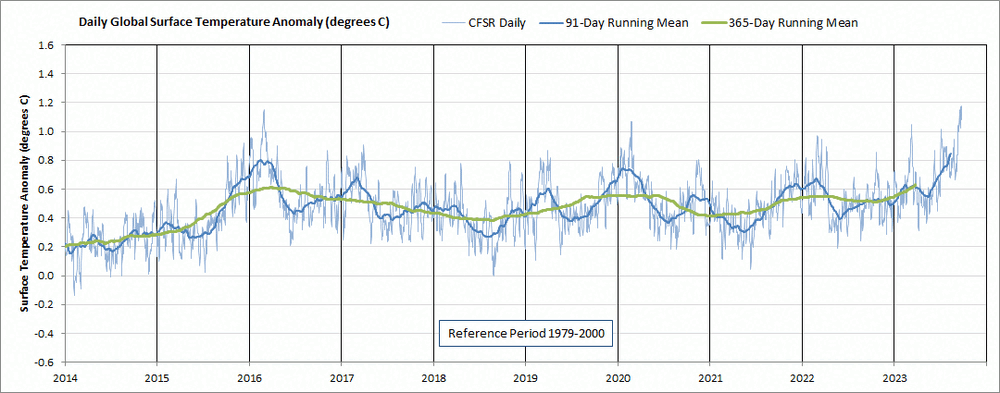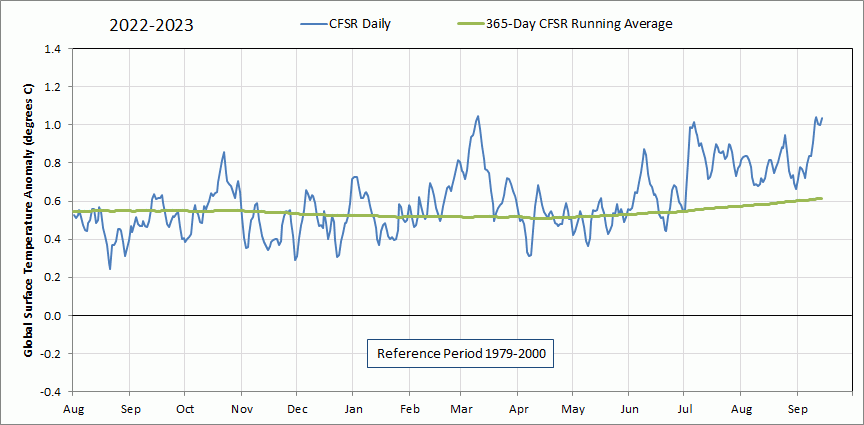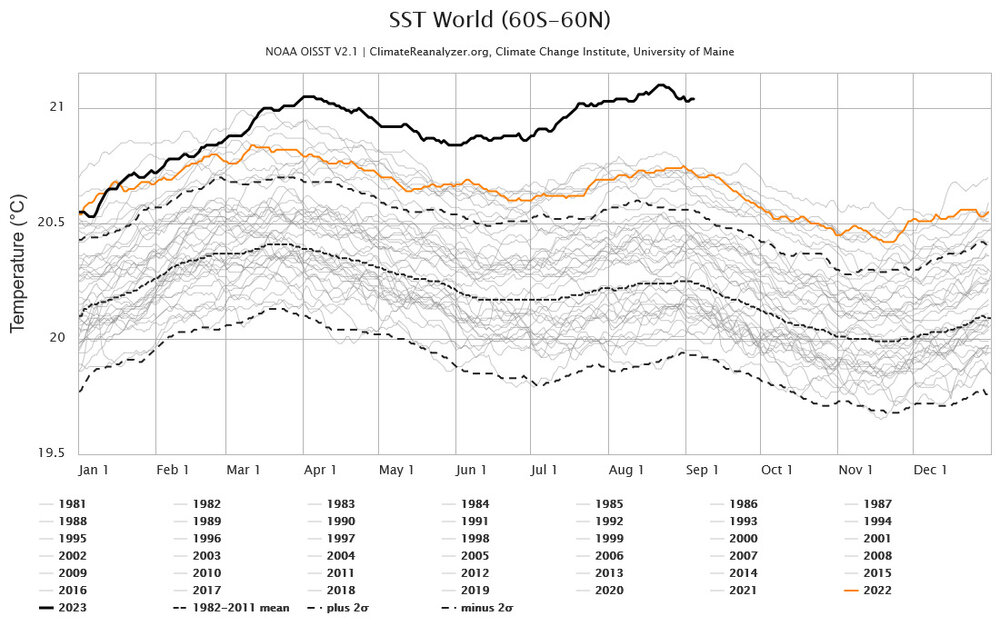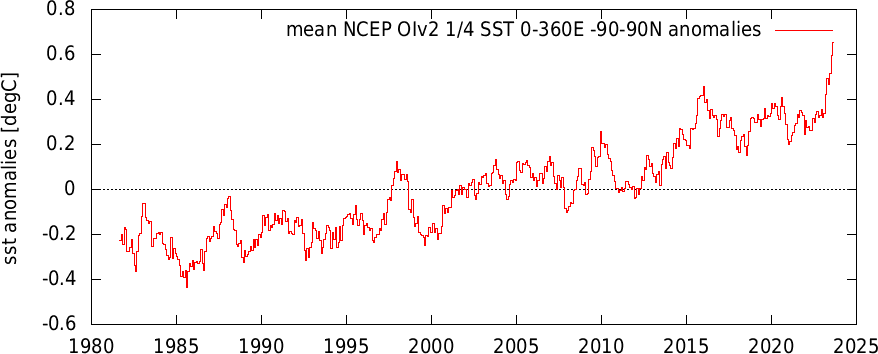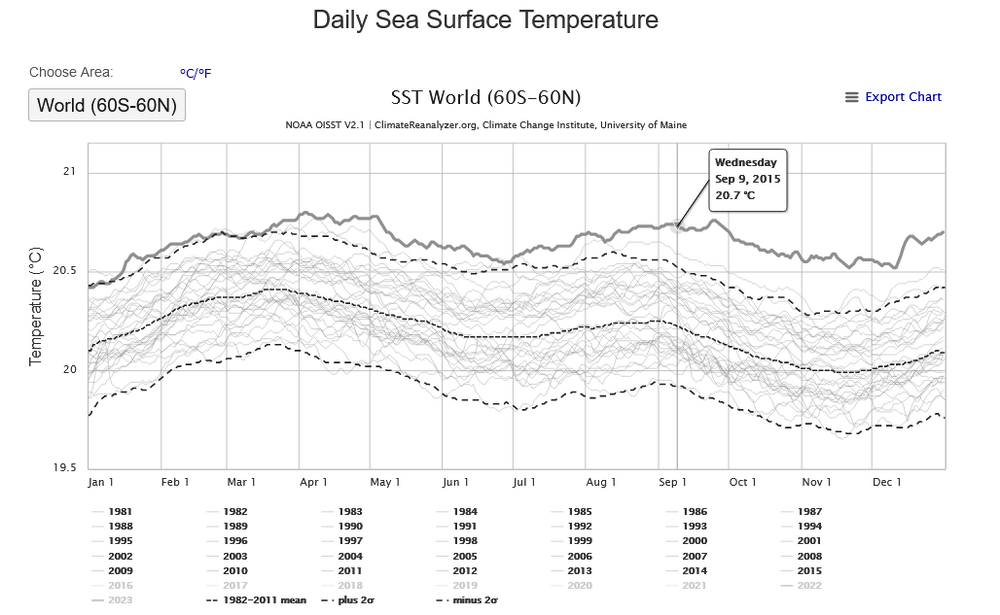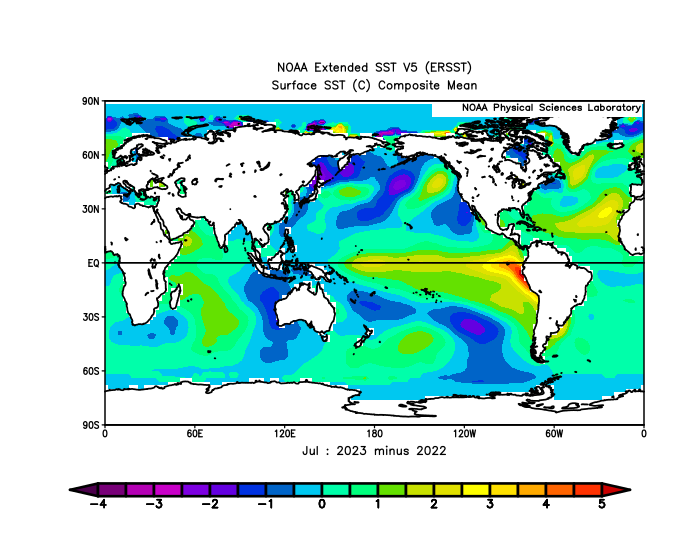
chubbs
Members-
Posts
4,039 -
Joined
-
Last visited
Content Type
Profiles
Blogs
Forums
American Weather
Media Demo
Store
Gallery
Everything posted by chubbs
-
One factor that could help explain the recent rise in TOA flux and this years temperature spike is underestimation of aerosol cooling impacts. There is a wide uncertainty band for aerosol cooling. Could be that aerosols impacts are in the upper portion of the band and have been suppressing GHG warming to a greater extent than expected. Most of the recent TOA flux increase is increased solar radiation hitting the surface consistent with reduced aerosol impact. Now that aerosol emissions are decreasing, GHG warming is realized to a greater extent and TOA flux and temperature are responding. We will need to see an updated scientific assessment to be sure.
-
Here's a Youtube of a recent hour long seminar on Hunga Tonga. The climate part starts at the 40 minute mark. tl:dr - the net impact is a very small cooling as aerosol effects balance water vapor.
-
Wow. Way above recent mod+ nino Septembers: Sept 1997: -0.11 Sept. 2002: 0.04 Sept 2009: 0.10 Sept 2015: 0.09
-
Interesting to look at the differences between ninos in chart above. 2009/10 had a large drop in TOA flux while 15/16 had a small increase. Hopefully we get a good explanation for this years TOA Flux and temperature spikes. A couple of reasons why TOA flux wouldn't neccessarily track surface temperature: 1) Radiation leaves the earth from the upper troposphere. If the atmosphere is stable, surface warming may not increase outgoing radiation much. This enso is east-based and the east Pacific has cooler waters and a stable atmosphere; 2) Positive feedbacks kick-in with warming, increased water vapor and decreased low-level clouds. Again low-level cloud effects are maximized in E Pac.
-
-
September has a good shot at breaking the GISS anomaly record of 1.37 set in Feb 2016. Sept 2015 was "only" 0.85 on GISS. Most of the nino warming was still to come at this point of the 2015/16 cycle.
-
Report: Another Year of Record Heat for the Oceans
chubbs replied to donsutherland1's topic in Climate Change
A particularly large rise in OHC in 2022 per small chart in upper left. The global temp records we are seeing this year aren't surprising, given the nina-related warmth stored in the ocean the past couple of years. -
A simple explanation of role of water vapor in climate change from a climate expert: "So these changes mean that where it is not raining, drought and wildfire risk increase, but where it is raining, it pours." https://www.theclimatebrink.com/p/how-rising-water-vapour-in-the-atmosphere
-
Good discussion about CC impacts on northeast snow above. Here is my two cents. A couple of general comments first: 1) As mentioned above you have to be careful evaluating recent trends. Snowfall is highly variable year-to-year and decade-to-decade in the northeast. 2) Climate change is ongoing. If we want a centered 30-year average to get 2023 snowfall climatology we are going to have to wait till 2038. This is problematic because snowfall is becoming even more variable. Per 2018 paper linked below we shouldn't expect big climate impacts on northeast US storm tracks. In addition we aren't going to see significant negative climate impacts on big snowstorms, they may even become heavier; but, we will steadily lose lighter snow events as conditions that allow snow become more infrequent. In general this agrees with recent experience. https://agupubs.onlinelibrary.wiley.com/doi/pdfdirect/10.1029/2018GL079820 Now for some data. Below are running 30-year average snow for I95 and a few inland sites. The chart is on a log scale so cities with heavier snow don't dominate and to highlight percentage changes. I would group the chart into two main baskets. There is a northern group with mixed trends, coastal generally doing better than inland in recent decades; and, there is a southern group that is in long-term decline. My interpretation is that the negative impact of loosing potential snow days overcomes other climate change impacts at the southern sites. If you are a snow lover, the data indicates that you don't want to get warmer than Richmond was 1960-1990. Unfortunately we will get to test this theory at additional sites this decade. We'll see if it holds up.
-
Yes, CFS anomalies holding near high for year past 5 days. Only brief periods in Feb 2016 and feb 2020 were higher than 2023 spikes. Late winter is typically when the highest anomalies occur. The late winter spikes this year are going to come off a much higher base.
-
Below is good link for US flood risk info. FEMA risk # need an update https://yaleclimateconnections.org/2023/07/30-great-tools-to-determine-your-flood-risk-in-the-u-s/
-
The steadily increasing trend in your model indicates you may be right about the current model forecast underestimating the mean. Not surprising that the model has erred low. We've never had a year separate from the others in summer like this one, so hard to forecast this year from past behavior. If the current separation vs existing records holds through the rest of the year, then your model will be low. We'll see.
-
Another way of looking at it. 2015 is the enso analog to this year but 2015 had somewhat higher oni. UAH averaged 0.14 in 2015. This year is averaging 0.31, but should end up near or above the 0.39 record; which mplies strong warming over the past 8 years.
-
UAH needs to average 0.55 for the rest of the year to break 2016's record. Doable considering higher values in the past 2 months, and the strengthening nino. Would expect uah to peak early in 2024. UAH temperatures are recovering to record levels much faster after the 2016 compared to the 1998 nino peak. Either warming is accelerating or UAH has changed or both.
-
An early look at August climate station data that feeds GISS and other analysis (uses a 1961 to 1990 baseline). Blue crosses are stations. A good portion US was relatively cool.
-
-
Dr. Otto usually chooses her words carefully. Googled "Pyrocene" - the term was coined by fire expert Steven Pyne in 2015. Below is a link to his website which has info on his publications. https://www.stephenpyne.com/bio.htm Below is a good blog article on Canadian fires and climate change. https://www.theclimatebrink.com/p/canadian-wildfires-and-climate-change Finally believe that the CO2 emissions from forest fires are included in carbon cycle models but don't know the details. Would guess that uncertainty in future wildfire CO2 and CH4 emissions is large.
-
-
SST progression in 2015. If this year behaves similarly, would expect SST anomaly to peak near the end of the year. If so the Jan---->Dec SST anomaly increase this year would be roughly 2X 2015.
-
July SST 2023 minus 2022, this year's increase in global SST is mainly due to enso. Note that warming is particularly strong in the 1,2 region and extensive in the eastern Pacific over a broad latitude range from Chile to Mexico, particularly in the S Hemi. The tropical and subtropical E Pac has a large positive feedback to ocean warming due to reduced cloud cover and stability (see slide posted above). Timing of the SST rise this year also argues for enso being the heavy hitter in warming SST, that and the large forcing imbalance which built up under the long period of nina conditions.




